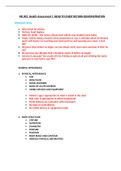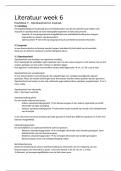Essay
BTEC Applied Science Unit 17CD - Culturing microorganisms (Distinction)
- Vak
- Instelling
- Boek
Exemplar assignment for Unit 17CD, the second and final assignment in BTEC Applied Science Unit 17. This assignment was given a DISTINCTION. If you take anything from this assignment, please put it in your own words otherwise it will count as plagiarism! I hope it helps!
[Meer zien]













